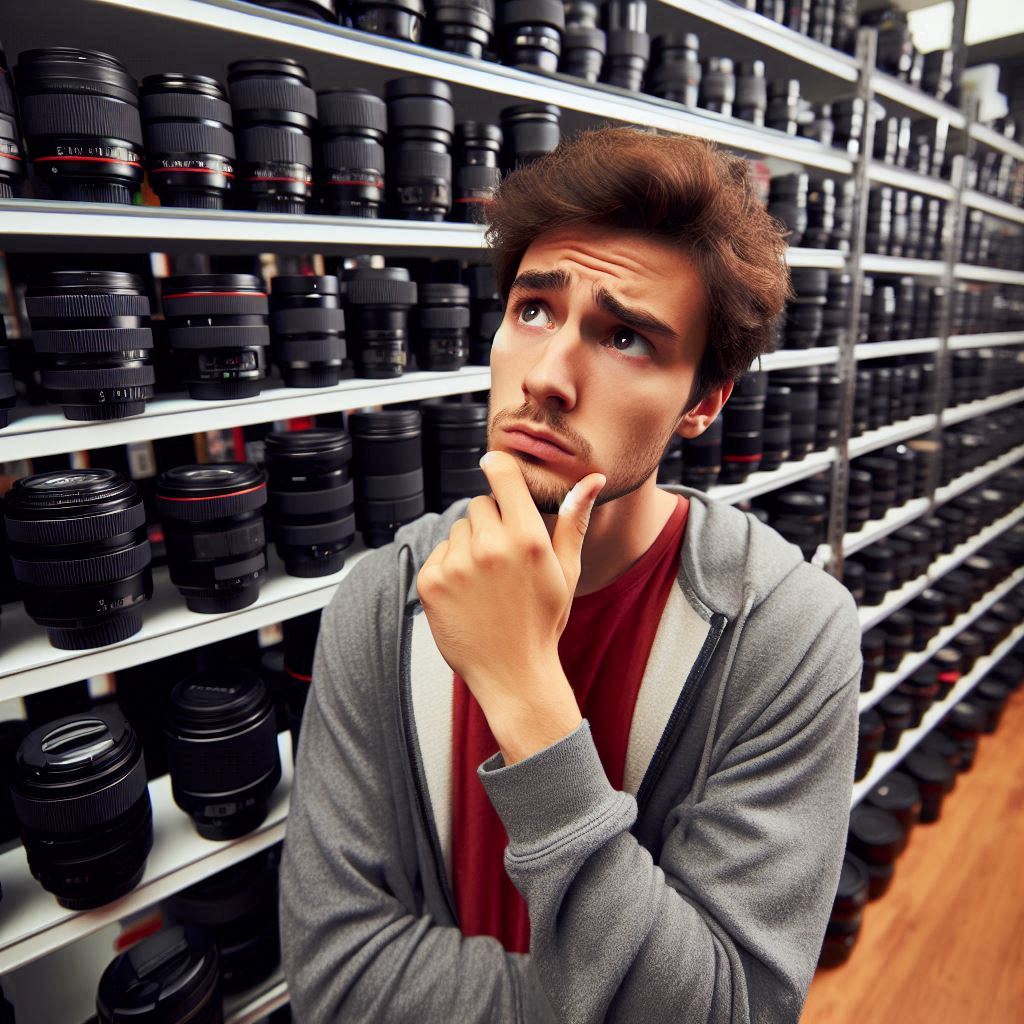
Selecting the right lens for your photography can be as crucial as choosing the right camera. Whether you are gearing up for a specific shoot or planning to invest in a new lens, understanding the intricacies of lens selection can make a significant difference in the quality of your photographs. This post will walk you through the process of choosing the right camera lens, focusing primarily on wildlife and landscape photography, while also touching on other types of photography.
Understanding Lens Basics
1. Focal Length: The focal length of a lens, measured in millimeters (mm), determines the field of view and magnification. Shorter focal lengths (e.g., 18mm) offer a wide-angle view, ideal for landscapes. Longer focal lengths (e.g., 300mm) provide a narrow field of view with higher magnification, perfect for wildlife photography.
2. Aperture: The aperture, indicated by f-numbers (e.g., f/2.8, f/5.6), controls the amount of light entering the lens and affects depth of field. Lenses with larger apertures (smaller f-numbers) are better for low-light conditions and achieving a shallow depth of field.
3. Lens Mount Compatibility: Different camera brands and models use specific lens mounts. Ensure the lens you choose is compatible with your camera body. Adapters are available but may affect performance.
Choosing a Lens for Specific Settings
Wildlife Photography:
Wildlife photography often requires capturing subjects from a distance, making telephoto lenses essential. Consider the following factors:
- Focal Length: A lens with a focal length of 200mm or more is ideal. For small or distant subjects, a 400mm or longer lens is preferable.
- Aperture: Wildlife photographers benefit from lenses with large apertures (e.g., f/2.8, f/4) to capture fast-moving animals in varying light conditions.
- Image Stabilization: Lenses with image stabilization (IS or VR) help reduce camera shake, essential when using long focal lengths.
Example Lenses:
- Canon EF 100-400mm f/4.5-5.6L IS II USM
- Nikon AF-S NIKKOR 200-500mm f/5.6E ED VR
Landscape Photography:
Landscape photography often involves capturing wide, sweeping vistas. Wide-angle lenses are typically used for this purpose:
- Focal Length: A focal length between 14mm and 35mm is ideal for capturing wide scenes.
- Aperture: A mid-range aperture (e.g., f/8 to f/16) is usually sufficient, as landscape photography often requires a deeper depth of field.
- Distortion Control: Wide-angle lenses can introduce distortion. Look for lenses with minimal distortion or use post-processing techniques to correct it.
Example Lenses:
- Canon EF 16-35mm f/4L IS USM
- Nikon AF-S NIKKOR 14-24mm f/2.8G ED
Other Types of Photography
Portrait Photography:
Portrait photographers often use lenses that can create a pleasing bokeh effect, isolating the subject from the background.
- Focal Length: A focal length between 50mm and 135mm is ideal for portraits.
- Aperture: Lenses with large apertures (e.g., f/1.4, f/1.8) help achieve a shallow depth of field.
Example Lenses:
- Canon EF 85mm f/1.8 USM
- Nikon AF-S NIKKOR 85mm f/1.4G
Macro Photography:
Macro lenses are designed for close-up photography, capturing fine details of small subjects like insects or flowers.
- Focal Length: Macro lenses typically have focal lengths between 50mm and 200mm.
- Magnification: A true macro lens offers a 1:1 magnification ratio, meaning the subject is captured at life-size on the sensor.
Example Lenses:
- Canon EF 100mm f/2.8L Macro IS USM
- Nikon AF-S VR Micro-NIKKOR 105mm f/2.8G IF-ED
How Setting Influences Lens Choice
Low Light Conditions:
In low-light settings, lenses with larger apertures (e.g., f/1.4, f/2.8) are essential to allow more light into the camera, reducing the need for higher ISO settings which can introduce noise.
Fast-Moving Subjects:
For sports or wildlife photography, a lens with a fast autofocus system and large aperture helps capture sharp images of moving subjects.
Wide Landscapes vs. Detailed Portraits:
Wide-angle lenses are suited for capturing vast landscapes, while lenses with longer focal lengths and larger apertures are better for detailed portraits.
Lens Compatibility and Investment
Lens Mounts:
Different brands use different lens mounts, and not all lenses are compatible with all camera bodies. Major brands like Canon, Nikon, Sony, and others have their proprietary mounts. Adapters can be used but may compromise functionality and image quality.
Future-Proofing:
When investing in a lens, consider your future needs. High-quality lenses are a long-term investment and can outlast your camera body. Look for lenses that can grow with your skills and potential future camera upgrades.
Third-Party Lenses:
Brands like Sigma, Tamron, and Tokina offer high-quality lenses compatible with major camera brands. These lenses can be more affordable without sacrificing performance.
Final Thoughts
Choosing the right lens involves understanding your specific needs and the technical aspects of lenses. For wildlife photography, a telephoto lens with a long focal length and large aperture is crucial. Landscape photography benefits from wide-angle lenses with good distortion control. Always consider the compatibility of the lens with your camera body and future-proof your investment by choosing versatile and high-quality lenses. By carefully selecting your lenses, you can enhance your photography and achieve the best results for any type of shoot.
Happy Shooting!!!
Did you enjoy this post? Do you want to know when the next post comes out? Consider subscribing. I only send update emails once a week, usually on Friday. Try it out. You can unsubscribe at any time.
